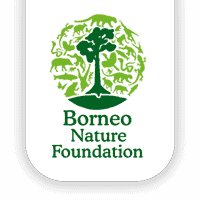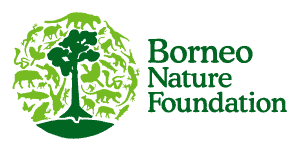On Saturday 5 May 2018, a group of 14 people consisting of 12 students and 2 teachers from Green School Bali arrived in the Kereng Bangkirai Village. They were assisted by two Borneo Nature Foundation (BNF) Officers to go to the Research Camp in the Sebangau National Park forest.
The school previously visited the research camp twice in the last two years. Currently, they came back with the students from grade 11 and 12 and also members of Kulkul Connection (a local community in Bali that supported by Green School)to spend 4 days venturing the lowland forest of Borneo, Sebangau National Park, with a structured schedule for learning not only the forest and its habitat but also experiencing hands-on research practices with BNF experts.
The BNF Field Staffs and Scientists shared about the tools used to carry out research in the forest (i.e. GPS, data sheets, camera trap, and so on), butterfly trap, biodiversity monitoring, gibbon triangulations, Orangutan nest survey, reforestation, and conservation activities.

Photo by Arapa Efendi | BNF | CIMTROP
Dan, a visiting leader from Green School Bali, has been accompanying the school group since its very first visit to Sebangau National Park. Previously, he was involved in the same activities with the other student groups in the forest.
“When you’re walking through this path on this board, you can feel the wildlife and it’s always good to get the students out here for the new perspectives of learning,” Dan said to BNF.
The activity soon started when Joana from BNF Education Division gathered the group for icebreaking activities. The purpose of this session was to get everyone know their friends and also the field staffs, scientists, and the other members of research camp.
After the session ended, the other BNF officer shared about health and safety instructions in the forest. It was foremost because the students would be given an opportunity for the forest walk on their very first day to adapt with forest environment as well as the spongy and swampy land.
The sharing session was then followed by a presentation session by BNF officer regarding biodiversity of the forest and its habitat. The presentation emphasized the importance of butterfly traps for water monitoring and how to set the traps for the butterfly in the forest.
To make the experience more hands-on, the students were asked to get involved in the making process of the baits for butterfly trap with Ari, a BNF field staff. Rahayu, a school teacher in the group, was the first to take the initiative in making bait from a mixture of sliced bananas and Malaga (Indonesian wine) and putting them into a plastic bucket.
After all the traps were ready, the school was split into three groups to get into the forest for setting up the traps. Each group was accompanied by three BNF scientists and field staff. The forest walk went easy but not until the group had to get down from the rail board to the spongy peatland. The groups seemed to struggle walking on it while some were trapped in the watery hole on the peat.
“It was totally a different environment. I thought peat-land is like something like this but it turns out very different to see it directly here. It’s super soft and floppy. The trip is like coming out of a shell, we like the research sharing as well” said Mikel, one of the Green School students.
After break time, Sophie, Joana, and Ika, BNF team members, shared the compass and GPS uses to the students. In the evening the groups had to get involved in navigation game to look for the hidden cups in the forest by using the GPS. “It’s very hands-on for the students. Though they look tired, they seem to enjoy every single activity here. And also from this forest visit, they could take a lot of benefits like we saw pit viper hanging on the tree, it’s very rare in town” said Rahayu.
“It’s fantastic to see Orangutan in its real home, swinging here and there on the tree” Angie, a group member from Green School, expressed her super enthusiastic tone.

Angie and the other group members were very lucky to have the opportunity to see Georgia, a female Orangutan inhabiting Sebangau National Park, while they were out on their field practice with BNF scientists in the forest. Having the chance to see Georgia swinging from one tree to another in its wild habitat is a dream coming true experience for any newcomer in the Sebangau forest. As widely known, Sebangau National Park is home for the largest native red ape population which is currently endangered according to IUCN Red List 2016.
On the last day of the trip, the school returned to Kereng Bangkirai Village. In the village, they spent hours to play fun traditional games with Anak Sebangau such as the iconic Gobak Sodor. The game was physically stimulating as the two groups were rained in sweat because they ran here and there in the box trying to catch the opposite ‘enemy’.
Are you curious about what you can do in the field trip? Join us to experience the wild Sebangau National Park in our school trip programme or follow our social media accounts to hear more stories from us! (AE)
 |  |
Green school students play traditional games with Anak Sebangau
Photo by Arapa Efendi

